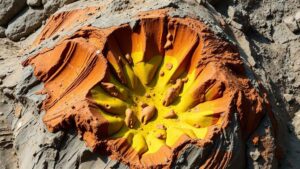Recovering Gold Using Bucket Classifiers and Affordable Accessories
Recovering Gold Using Bucket Classifiers and Affordable Accessories
The quest for gold recovery has been a pivotal aspect of mining and prospecting for centuries. As the demand for gold continues to rise, so does the need for efficient and cost-effective recovery methods. Among several techniques, the use of bucket classifiers presents a viable option for individuals and small-scale miners. This article explores the mechanics of using bucket classifiers, affordable accessories to enhance recovery, and their practical applications in gold recovery operations.
Understanding Bucket Classifiers
Bucket classifiers are devices designed to separate materials based on size and weight, optimizing the recovery of valuable minerals such as gold. Traditional classifiers utilize gravity to classify materials, allowing smaller particles to pass through a mesh while retaining larger, denser pieces.
These devices can be made from affordable materials, making them accessible to a wide range of users–from hobbyists to serious prospectors. Understanding how bucket classifiers function is essential to maximizing gold recovery rates.
How Bucket Classifiers Work
At their core, bucket classifiers consist of a series of buckets attached to a rotating shaft. process operates as follows:
- Loading: Material is fed into the classifier.
- Separating: As the buckets rotate, gravitational forces allow the material to settle. The larger particles remain in the buckets, while smaller particles are released through mesh screens at the bottom.
- Recovery: The larger, heavier particles (which often include gold) are collected at the output, while the lighter materials are discarded.
This efficient separation reduces the amount of material miners need to sift through, significantly saving time and labor costs.
Affordable Accessories for Enhanced Gold Recovery
Incorporating affordable accessories can significantly boost the effectiveness of bucket classifiers in gold recovery. Some beneficial accessories include:
- Vibrating Sluice Boxes: By adding a vibrating sluice box to the exit of a bucket classifier, miners can enhance the concentration of gold. vibration helps separate fine gold from lighter materials more effectively.
- Magnetic Separators: Using magnetic separators can also assist in removing iron and other magnetic minerals from the recovered materials, thus further purifying the gold.
- Classifying Screens: Screens with varying mesh sizes allow prospectors to experiment with separating materials based on different criteria, increasing recovery rates.
Case Study: Successful Useation
An example of effective gold recovery using bucket classifiers can be found in the Yukon Territory, Canada. Small-scale miners using custom-built bucket classifiers reported recovery rates surpassing 90% of the available gold in their claims. By complementing their classifiers with vibrating sluice boxes and classifying screens, they achieved significant efficiencies, with reported labor savings of up to 40%.
Real-World Applications and Considerations
Ultimately, the use of bucket classifiers in gold recovery can be applied in various contexts, from hobbyist prospecting to small-scale commercial operations. But, several factors must be considered:
- Material Type: Depending on the geological conditions, different configurations may yield better results.
- Local Regulations: Miners should be aware of local mining laws and regulations regarding small-scale operations.
Also, miners should always conduct thorough research and possibly trial runs to determine the most effective configurations and accessories for their specific situation.
Actionable Takeaways
The application of bucket classifiers in gold recovery is an effective method that can be enhanced with affordable accessories. By incorporating elements such as vibrating sluice boxes and magnetic separators, miners can significantly improve their recovery rates while minimizing labor. Understanding the mechanics of these devices and tailoring them to specific operational needs will ensure success. Future miners looking to explore this method should consider local regulations and conduct initial trials to refine their processes.


